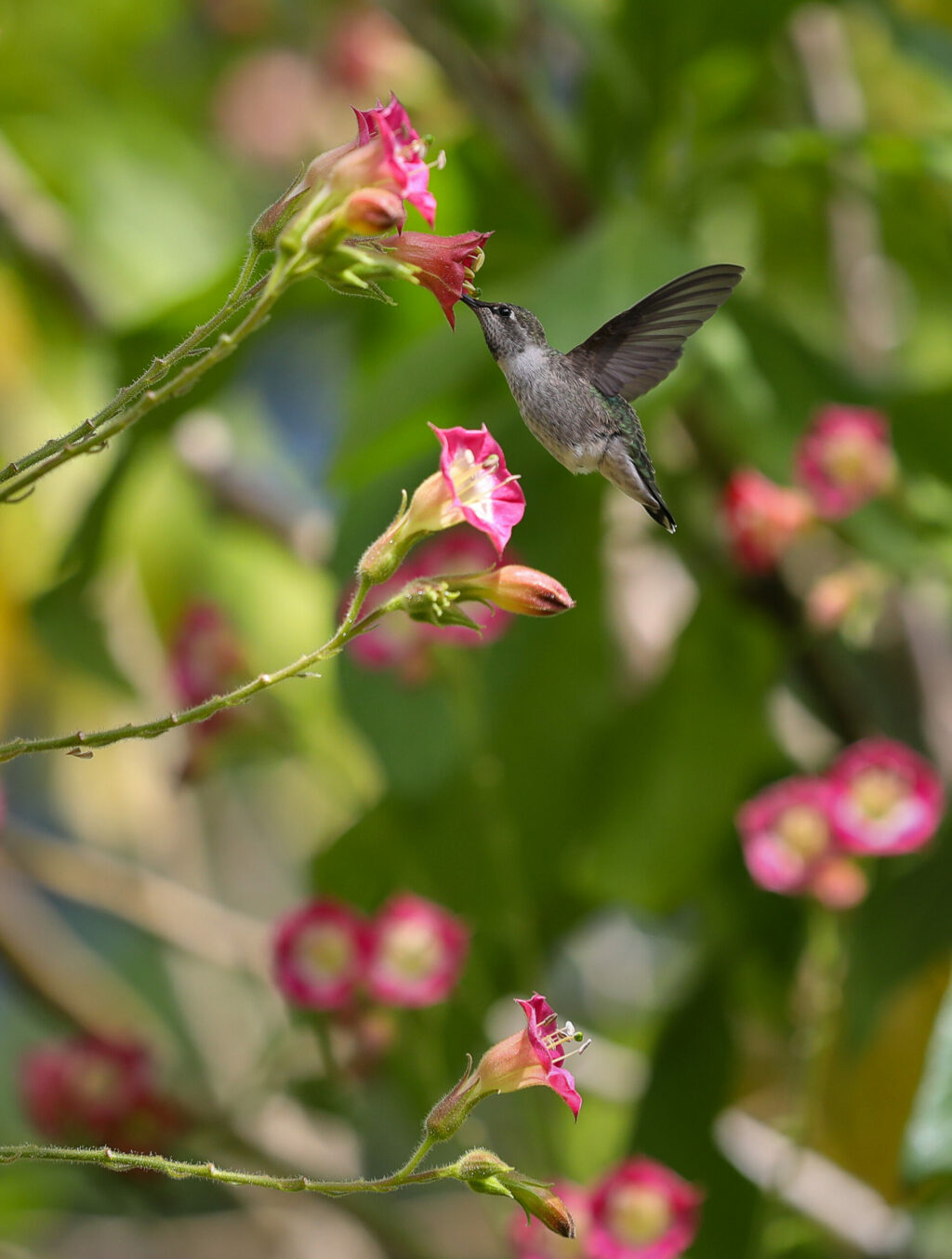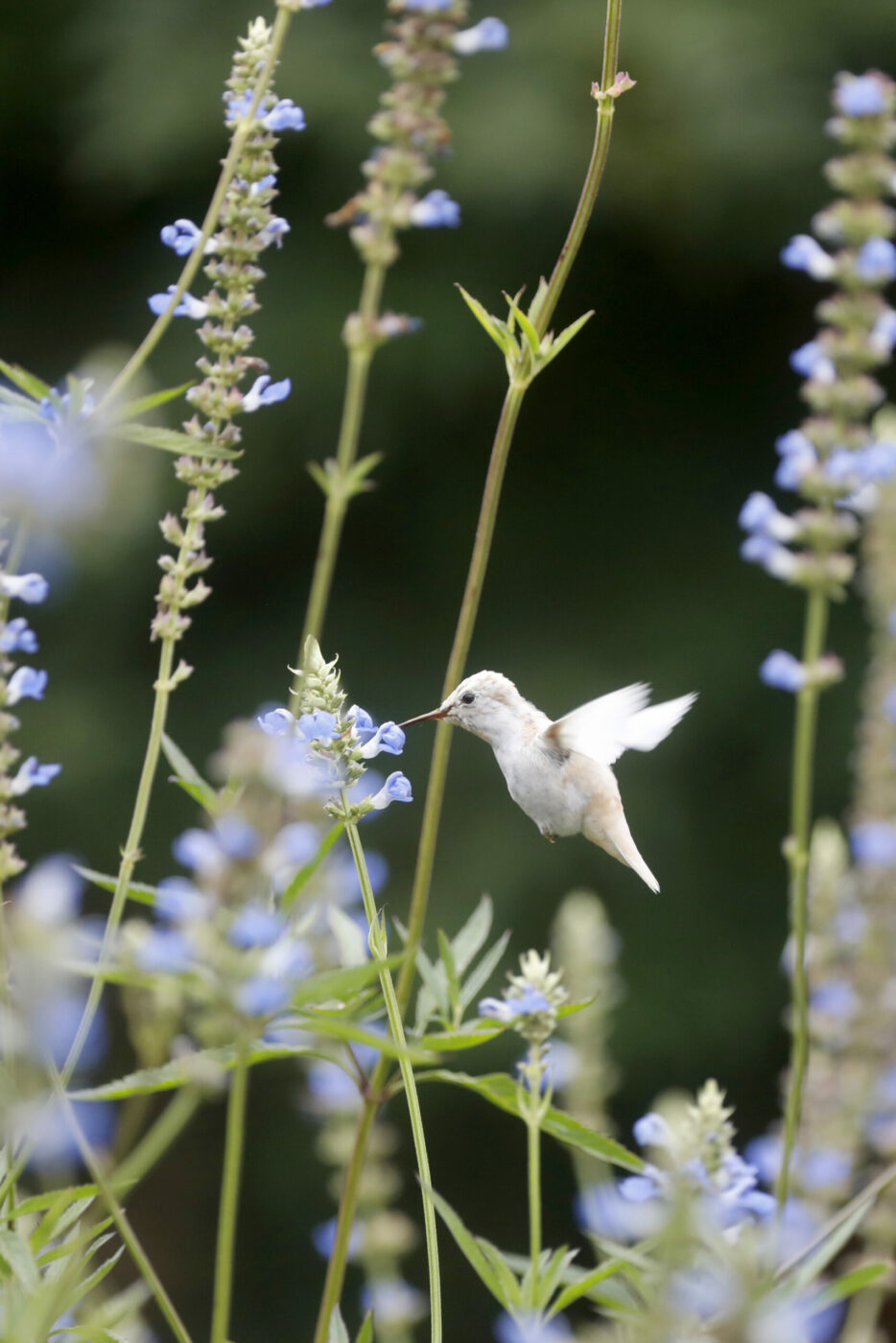Sonoma County Hummingbirds Aflutter in Early Summer
“The cool thing about hummingbirds is that a lot of people, nonbirders, seem to be pretty aware of them,” says Petaluma’s Dan Nelson, assuredly a birder after helping the local Madrone chapter of the Audubon Society record observations for over four decades.
In courtship, males fly high above the treetops then dive-bomb back to earth, producing at the last second a distinctive chirp from their flared tail feathers before arcing sharply skyward, an acrobatic feat repeated again and again to show off to their mates — as if their brilliant, iridescent plumage weren’t enough.

Despite hummingbirds’ diminutive size, they can travel vast distances. Allen’s hummingbirds breed here between January and July but spend the rest of the year in central Mexico. Three-inch Rufous hummingbirds are long-haul truckers by comparison: they pass through Sonoma in spring on the way to breeding grounds as far north as Alaska, and in fall on their way back to Mexico.
Anna’s hummingbirds, the least migratory North American hummingbird species, reside in Sonoma County year-round. Identifiable by their emerald backs and unique rose-pink heads, they account for most local sightings and feeder visits. This makes them no less special — but to birders like Nelson, more unexpected guests are of even greater intrigue.

He still remembers the day in March 1992 when a man in Kenwood called to report seeing a “real unusual albino hummingbird” at his feeder. Albinism is not uncommon in hummingbirds, but what excited Nelson was that the bird had a red beak. Albino Anna’s have yellowish beaks, so Nelson knew he was dealing with something different. He rushed to the man’s house and saw that indeed, this was a rare bird: a violet-crowned hummingbird with a bare-white chest and neck, far removed from its usual warm-climate, desert southwest range.
“I asked if it would be all right if I told a few friends about it, and told him if so, there might be some people that would show up,” Nelson laughs. “The bird stayed for four or five days, and by the end, everybody was calling their friends…Probably a hundred people got over there to see it.”
To attract hummingbirds, Nelson recommends mixing four parts water to one part sugar to fill your feeder (most feeders feature bright colors, so there’s no need to add red food coloring to the mix). Hummingbirds also feast on a range of flowering plants and insects, and are widely seen at this time of year, even just outside a kitchen window.













